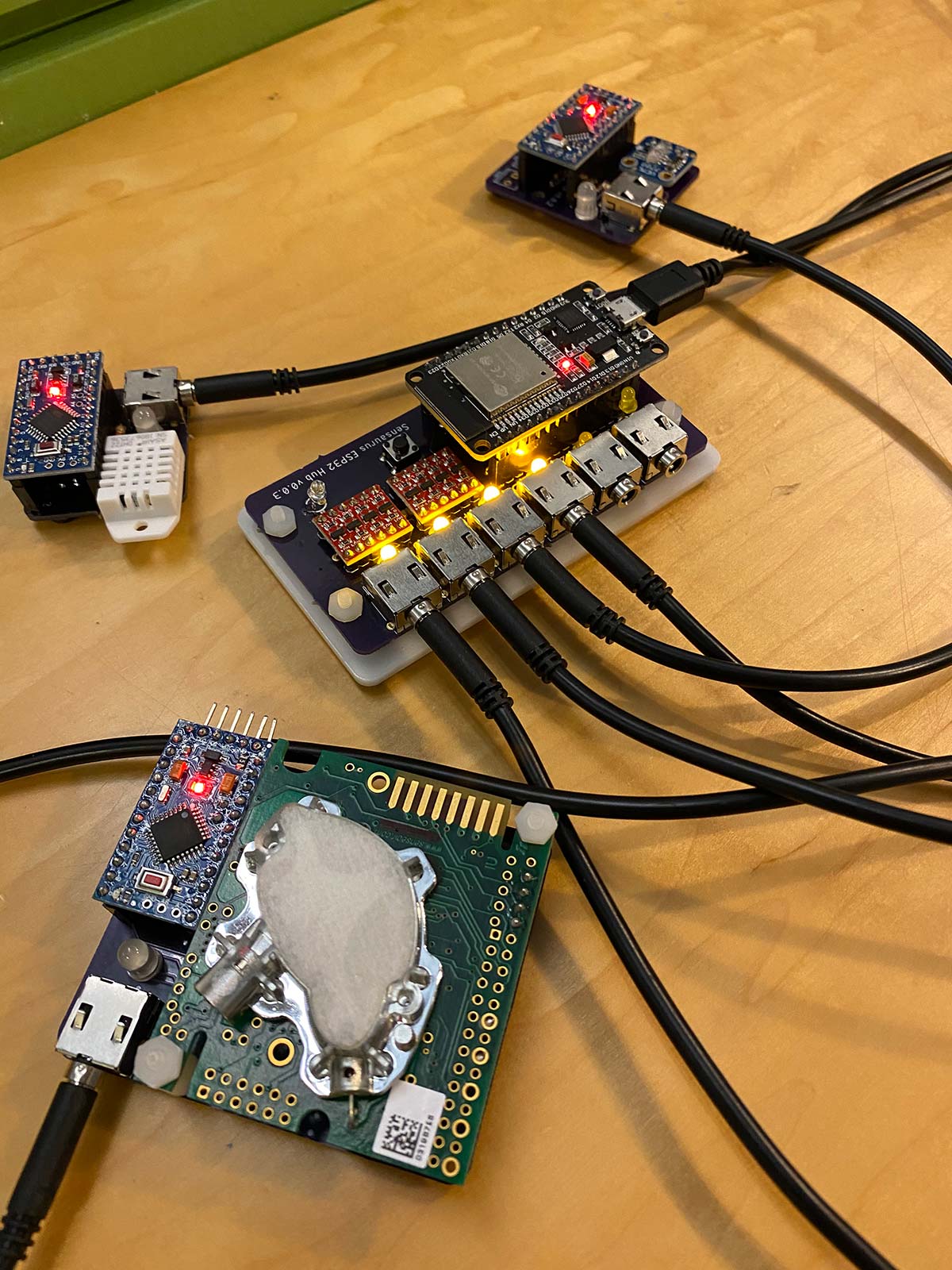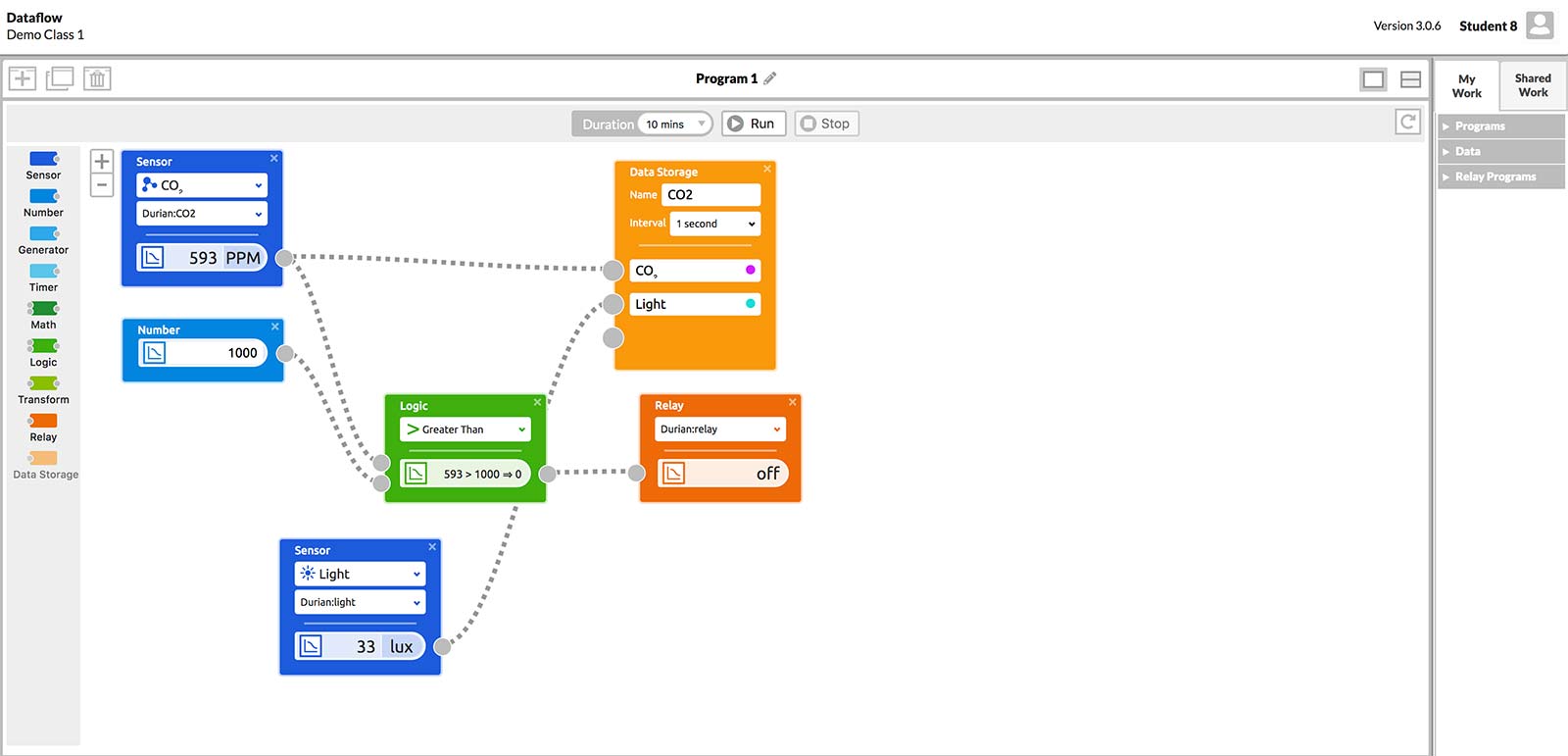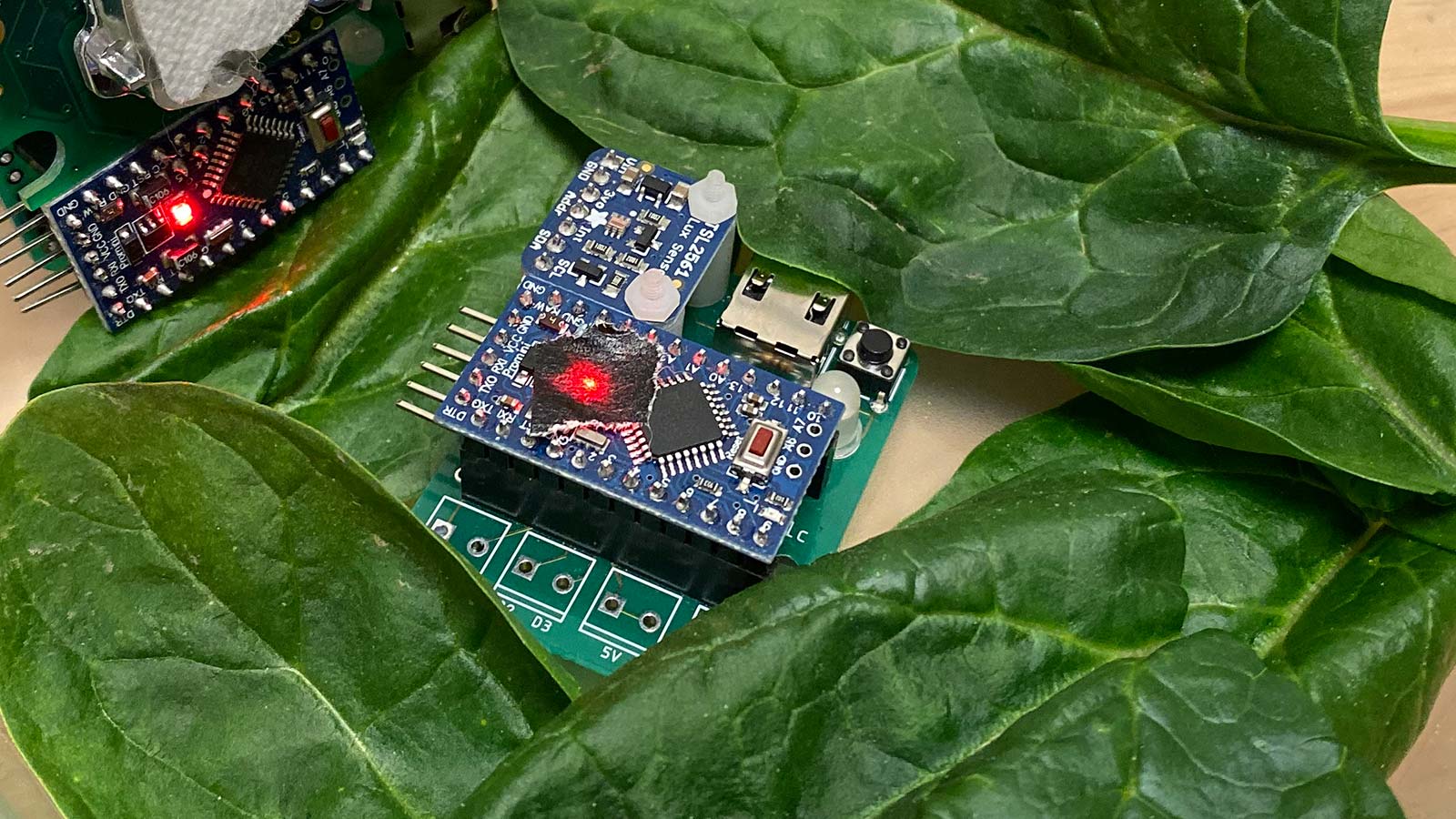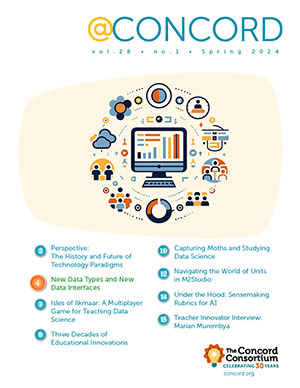Sensors and Spinach: Increasing Student Agency in Biology Class
One student fills a Tupperware container with spinach leaves, wondering if they should add more. Another student looks for the roll of aluminum foil while a third measures a piece of plastic wrap. It’s not lunchtime and they aren’t preparing salads. They are getting ready to create biospheres with a healthy and stable level of carbon dioxide gas as part of our InSPECT project, which aims to integrate computational tools and computational thinking practices into the high school life science curriculum.
The traditional method of teaching high school biology—lectures and cookbook labs—is far removed from the way real biology lab investigations are done. Further, when students encounter graphs or tables in their textbooks, the graphs are constructed from data produced by unknown scientists for unknown reasons in unknown settings with unknown tools and techniques. The result of this anonymous pedagogical model is a disconnect between students, data, scientific practices, and scientists. The InSPECT project unseals this black box, giving students the opportunity to undertake authentic science investigations and embody real science practices.
Hardware and software for student agency
With a hardware and software suite designed to be intuitive, InSPECT’s open-ended, technology-enhanced high school biology experiments facilitate inquiry and integrate computational thinking into core science content and practices. The modular hardware kit (Figure 1) includes multiple components so students have choices as they plan and perform their experiments. The kit includes programmable relays, plus CO2, light, temperature, humidity, and oxygen sensors. Hubs can connect up to six components using small cables and ports, making it easy to swap out relays or sensors.

Giving students the freedom to mix and match components expands the types of investigations they can pursue. For instance, students can use several CO2 sensors to check for variance between individual sensors, connect multiple relays and light sensors to create a system that turns itself on and off, or use three CO2 sensors to monitor the gas levels in three different systems.
InSPECT’s Dataflow software is a comprehensive platform for programming, data processing, and real-time data graphing. Within Dataflow, students are able to produce meaningful data and control their data through its lifecycle, making decisions as data flows from the collection device to a representation on screen. Students choose what data is being collected, where to collect it, how to modify or transform it, how to use the data to actuate a relay, how to store that data, and how to view the data.
To program in Dataflow students drag and connect nodes in the workspace. Figure 2 shows an example of a Dataflow program created by a ninth grader. The student uses both a CO2 sensor and a number node as inputs for a logic node to construct an if-then statement that controls the relay. The student also connects the CO2 sensor and light sensor nodes to a data storage node, which allows them to view a real-time graph of their data when the program is run. The data pathway is visualized through the wires used to connect Dataflow nodes: data flows from one node to another until it reaches an end point.

Unlike traditional block programming, students choose how to orient nodes in the Dataflow workspace. For example, if a student wants to read their program from right to left, they could position their nodes in that fashion. The node selector in the left-hand column of the workspace offers students additional programming options. A timer node actuates a relay based on a time schedule determined by the student. The generator node generates sine, square, and triangle waves with controllable amplitudes and periods. The math and transform nodes perform operations on the desired input. This wire and node programming style gives students the opportunity to view their program as a pipeline.
InSPECT hardware and software work together in an open-source Internet of Things (IoT) system. IoT functionality expands the number of interactions, activities, and investigations that can be carried out by giving students new things to do with data they produce. For example, students can monitor CO2 levels in the classroom next door or one thousands of miles away and automatically turn on a warning light if the level becomes unhealthy. Like many modern experiments that rely on remote equipment or are conducted in coordination with groups around the world, IoT systems aren’t confined to a classroom.
The InSPECT curriculum
Our seven-unit “lesson arc” targets Next Generation Science Standards HS-LS1 and HS-LS2 related to Disciplinary Core Ideas LS1.C: Organization for Matter and Energy Flow in Organisms and LS2.B: Cycles of Matter and Energy Transfer in Ecosystems. Students engage in several Science and Engineering Practices: developing and using models, planning and carrying out investigations, constructing explanations and designing solutions, using mathematics and computational thinking, and engaging in argument from evidence.

In the penultimate “Stabilization Lab” unit, students are asked to imagine containers of spinach as mini-biospheres (Figure 3) that need to be kept at healthy CO2 levels. This lab challenges students to create the flattest CO2 dataset they can and requires them to use the concepts from the previous photosynthesis and cellular respiration units. For many students this experience helps to finalize and fortify their conceptual models as they learn that cellular respiration is always occurring in plants while photosynthesis is a process that can happen in parallel under the right circumstances. The act of performing authentic investigations is key to building this understanding. When students produce their own data, it’s a far more powerful and lasting experience than simply looking at a graph of CO2 levels in a biosphere.
Student experience in InSPECT
Students are encouraged to approach the challenge in creative and diverse ways. Students who enjoy coding have created programs that actuate a red-blue LED lamp based on the CO2 sensor readings. Other students modified their physical experimental setups by varying the amount of spinach in their container or the intensity of a red-blue LED lamp. Many students modify both their physical and computational experimental setups.
Students also are able to control the way they carry out their experiments. Some groups plan their strategies ahead of time and only modify their approach after producing data, while others tinker with materials or their program throughout the lab. Students are able to do scientific work in a way that they enjoy.
InSPECT also helped create opportunities for collaboration between students. In a class where small group discussion previously was uncommon, groups of students talked and laughed while setting up experiments or producing data. Most of the more successful groups worked well with each other or were willing to learn from others by either interacting with them directly or through imitation.
Conclusion
Our goal with the InSPECT curriculum is to create something that feels different from “regular school.” Since many students had no previous background in programming or using sensors, the experience was novel. Even those who had prior programming and sensor experience found the open-ended nature of this lesson arc new and surprisingly different.
Additionally, not having to follow a thoroughly tested, rigid procedure to reach a predetermined and predictable conclusion allowed students to become comfortable with being uncertain. As students encountered uncertainty and had to make sense of their investigations, they developed their own way to approach challenges within the InSPECT curriculum. Students had more agency in the classroom than usual, which resulted in a new level of engagement, including by students who were often unengaged during traditional instruction.
Seth Van Doren (svandoren@concord.org) is a research assistant.
This material is based upon work supported by the National Science Foundation under grant DRL-1640054. Any opinions, findings, and conclusions or recommendations expressed in this material are those of the author(s) and do not necessarily reflect the views of the National Science Foundation.

